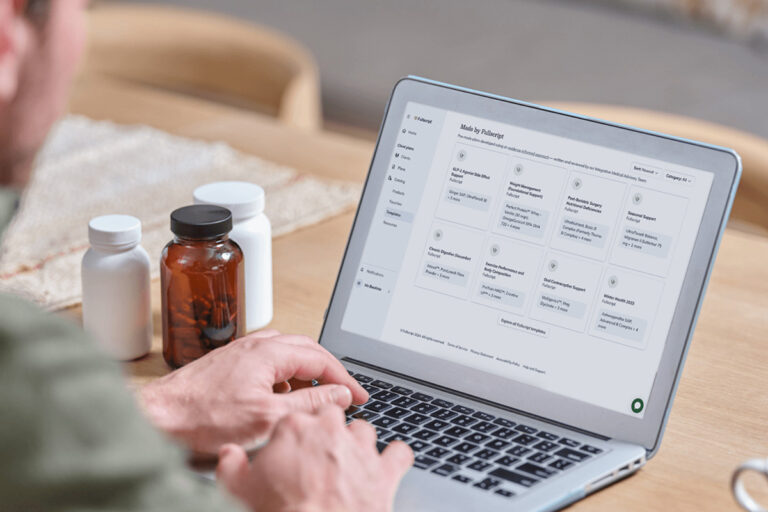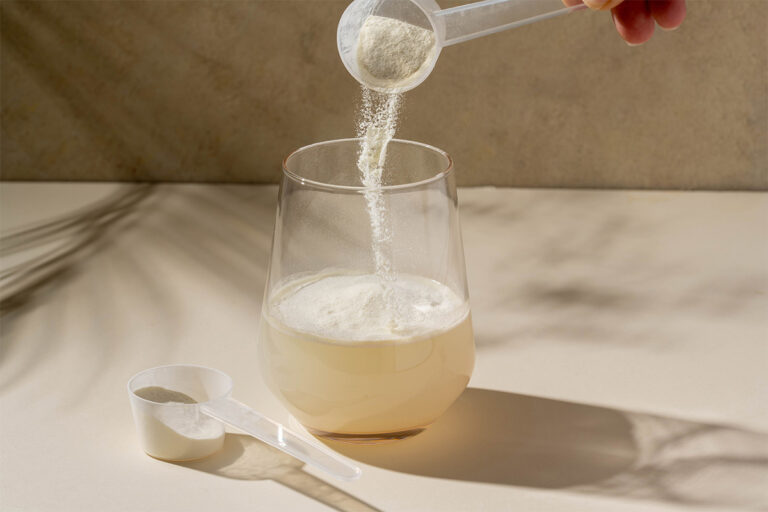Whether it’s mood swings or food cravings, premenstrual syndrome (PMS) is a common ailment of people who menstruate (have a period). PMS symptoms are generally mild, and experiencing severe PMS symptoms may indicate having a less common menstrual condition—premenstrual dysphoric disorder (PMDD). PMDD is estimated to affect anywhere from 2 to 10% of menstruators who have experienced PMS. (3)(8) PMDD symptoms include both physical and mood symptoms, such as breast pain and trouble focusing.
Continue reading below to learn more about PMDD risk factors and how to treat PMDD symptoms naturally.
What is PMDD?
PMDD is a mood disorder where menstruators experience severe mood disruptions or physical symptoms about one to two weeks before starting their period. Currently, the cause of PMDD is not well known. Biological, psychological, environmental, and social factors are involved. PMDD differentiates itself from PMS primarily by the severity of symptoms. PMDD symptoms typically occur mid-menstrual cycle (after ovulation) up until the start of the period. Once the period starts, symptoms should stop. (3)
Common symptoms of PMDD include:
Physical changes, such as:
- Bloating
- Breast tenderness or swelling
- Headaches
- Joint and muscle pain
- Weight gain
Mental and emotional symptoms, such as:
- Anxiety, tension, or panic attacks
- Changes in appetite (e.g., food cravings or binge eating)
- Changes in sleep
- Depressed mood (e.g., crying often, feelings of sadness, lack of interest in things that bring you joy)
- Difficulty concentrating
- Fatigue
- Irritability or anger
- Mood swings (8)(11)

PMDD risk factors
There is no consensus regarding the cause of PMDD. However, there appears to be an important genetic factor. For example, a study found that individuals whose mothers had PMS had a 70% chance of developing PMS themselves. However, individuals whose mothers never had PMS only had a 37% chance of developing PMS. For PMDD, you may have a higher risk of developing the condition if someone in your family has or previously experienced PMDD, anxiety, or depression. (8)
Common coexisting conditions
PMDD may be experienced alongside other conditions. For example, individuals with PMDD may experience issues with their sleep due to changes in nighttime body temperature and/or the production of the sleep hormone melatonin. (12)
Another condition that may exist with PMDD is bipolar disorder. This may be related to their shared impact on mood. Individuals with bipolar disorder II are reported to have a higher risk of experiencing PMS or PMDD. Similarly, individuals with preexisting PMS and/or PMDD also have an increased risk of having bipolar disorder I. (7)
Treating PMDD symptoms naturally
The treatment of PMDD is very unique to each patient. A wide variety of treatment options are available for managing PMDD symptoms. Conventional PMDD treatment typically includes over-the-counter medications such as Ibuprofen, prescription medications such as selective serotonin reuptake inhibitors (SSRIs), a type of antidepressant medication, and oral hormones, such as birth control pills. (3)(11)(13) However, approximately 50% of individuals do not benefit from these treatments. (4) Certain natural remedies, such as massage therapy and the use of supplements, may be a good option for those seeking more treatment options.

1. Behavioral interventions
Cognitive behavioral therapy (CBT) was found to be effective in treating PMDD. Specifically, CBT may improve coping mechanisms and stress management, lessening the burden of PMDD. (14)
2. Herbal remedies and natural supplements
Herbal interventions may reduce PMDD symptoms by 50%. (10) The herb chaste-tree (Vitex agnus-castus) may help decrease PMDD symptoms to a similar extent as fluoxetine (an SSRI). (2)(6)
3. Manual therapies
Acupuncture, light therapy, and massage have all been found to be helpful complementary therapies when managing PMDD. A systematic review (a study that examines multiple independent studies) found that acupuncture could reduce symptoms by up to 50%. (10) A study involving 30 participants found that scores for anxiety and depression decreased in those undergoing acupuncture treatments. (5)
Massage therapy may reduce water retention and pain associated with PMDD. Participants in the study also experienced improvements in anxiety and mood. (9)
In another study examining the effects of light therapy, female participants who were not using oral contraceptives (birth control) experienced improved mood and ability to empathize with others. (1)
The bottom line
PMDD is a complex mood disorder that requires a professional to help differentiate it from other mood disorders and menstrual syndromes. There are a variety of options to help manage the symptoms of PMDD. Creating an individualized plan incorporating a variety of therapies to help manage both physical and cognitive symptoms is key.
- Aan Het Rot, M., Miloserdov, K., Buijze, A. L. F., Meesters, Y., & Gordijn, M. C. M. (2017). Premenstrual mood and empathy after a single light therapy session. Psychiatry Research, 256, 212–218.
- Atmaca, M., Kumru, S., & Tezcan, E. (2003). Fluoxetine versus Vitex agnus castus extract in the treatment of premenstrual dysphoric disorder. Human Psychopharmacology, 18(3), 191–195.
- Bhatia, S. C., & Bhatia, S. K. (2002). Diagnosis and treatment of premenstrual dysphoric disorder. American Family Physician, 66(7), 1239–1248.
- Brownley, K. A., Girdler, S. S., Stout, A. L., & McLeod, M. N. (2013). Chromium supplementation for menstrual cycle-related mood symptoms. Journal of Dietary Supplements, 10(4), 345–356.
- Carvalho, F., Weires, K., Ebling, M., Padilha, M. de S. R., Ferrão, Y. A., & Vercelino, R. (2013). Effects of acupuncture on the symptoms of anxiety and depression caused by premenstrual dysphoric disorder. Acupuncture in Medicine: Journal of the British Medical Acupuncture Society, 31(4), 358–363.
- Cerqueira, R. O., Frey, B. N., Leclerc, E., & Brietzke, E. (2017). Vitex agnus castus for premenstrual syndrome and premenstrual dysphoric disorder: A systematic review. Archives of Women’s Mental Health, 20(6), 713–719.
- Cirillo, P. C., Passos, R. B. F., Bevilaqua, M. C. do N., López, J. R. R. A., & Nardi, A. E. (2012). Bipolar disorder and premenstrual syndrome or premenstrual dysphoric disorder comorbidity: A systematic review. Revista Brasileira de Psiquiatria (Sao Paulo, Brazil : 1999), 34(4), 467–479.
- Epperson, C. N., Steiner, M., Hartlage, S. A., Eriksson, E., Schmidt, P. J., Jones, I., & Yonkers, K. A. (2012). Premenstrual dysphoric disorder: Evidence for a new category for DSM-5. The American Journal of Psychiatry, 169(5), 465–475.
- Hernandez-Reif, M., Martinez, A., Field, T., Quintero, O., Hart, S., & Burman, I. (2000). Premenstrual symptoms are relieved by massage therapy. Journal of Psychosomatic Obstetrics and Gynaecology, 21(1), 9–15.
- Jang, S. H., Kim, D. I., & Choi, M.-S. (2014). Effects and treatment methods of acupuncture and herbal medicine for premenstrual syndrome/premenstrual dysphoric disorder: Systematic review. BMC Complementary and Alternative Medicine, 14, 11.
- Office on Women’s Health. (2021). Premenstrual dysphoric disorder (PMDD). https://www.womenshealth.gov/menstrual-cycle/premenstrual-syndrome/premenstrual-dysphoric-disorder-pmdd
- Parry, B. L., LeVeau, B., Mostofi, N., Naham, H. C., Loving, R., Clopton, P., & Gillin, J. C. (1997). Temperature circadian rhythms during the menstrual cycle and sleep deprivation in premenstrual dysphoric disorder and normal comparison subjects. Journal of Biological Rhythms, 12(1), 34–46.
- Sepede, G., Sarchione, F., Matarazzo, I., Di Giannantonio, M., & Salerno, R. M. (2016). Premenstrual dysphoric disorder without comorbid psychiatric conditions: A systematic review of therapeutic options. Clinical Neuropharmacology, 39(5), 241–261.
- Weise, C., Kaiser, G., Janda, C., Kues, J. N., Andersson, G., Strahler, J., & Kleinstäuber, M. (2019). Internet-based cognitive-behavioural intervention for women with premenstrual dysphoric disorder: A randomized controlled trial. Psychotherapy and Psychosomatics, 88(1), 16–29.





